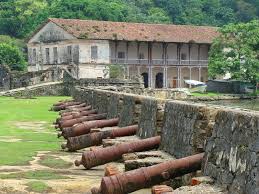Historical Sites
Portobelo
Portobelo used to be the biggest and most active port of Central America at the time of the conquistadors. Gold and other valuable goods delivered to Panama La vieja on the Pacific coast, were then transported by mules across the isthmus to the Caribbean port of Portobelo (name given by Colon from the Italian “Porto bello / Beautifull port”). During the commercial fairs, galleons loaded of goods from Spain were trading and sailing back with treasures. That’s why this bay has been oftenly attacked by pirates as well as Nombre de Dios (the very first port) and Colon.
Despite such attacks, part of the fortification are still stand. They offer also a nice view on the bay and its sailboats at anchorage.
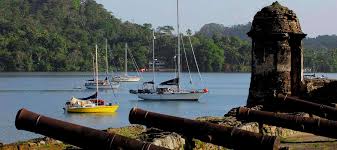
Octobre 21st is the yearly Black Christ festival (in the old church stands a Christ who’s black): some even walk from Panama City to Portobelo!
Unfortunatly the little city is often dirty as local people do not maintain their heritage.
Fort San Lorenzo
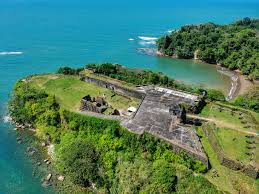
A very nice spot and well maintained!
This fort was built by Spanish to protect the entrance of the Chagres River who was also a passage through the isthmus for the Peruvian treasures. The Chagres river is beautifull and a real wild area where one can encounter monkeys, crocodiles, etc.. The view from the fort offers both the river and the Caribbean Ocean. The fort is almost as it was at the pirates times.
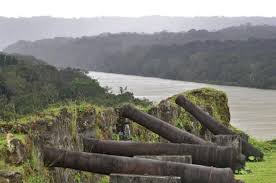
This spot has been classified by UNESCO and the fort has become a world heritage site.
The forest road to access the fort San Lorenzo is often an opportunity to meet (or at least hear) roaring monkeys.
The Old Panama
This is the name of the old city before the Morgan sack (1671) that did finish by a hudge blaze due to Juan Perez de Guzman the governor. The Old Panama was the arrival place of the ships back from Peru: from there, the goods were crossing the isthmus by mules to Nombre de Dios and later Portobelo. The city founded by Pedro Arias de Avila, August 15th, 1519.
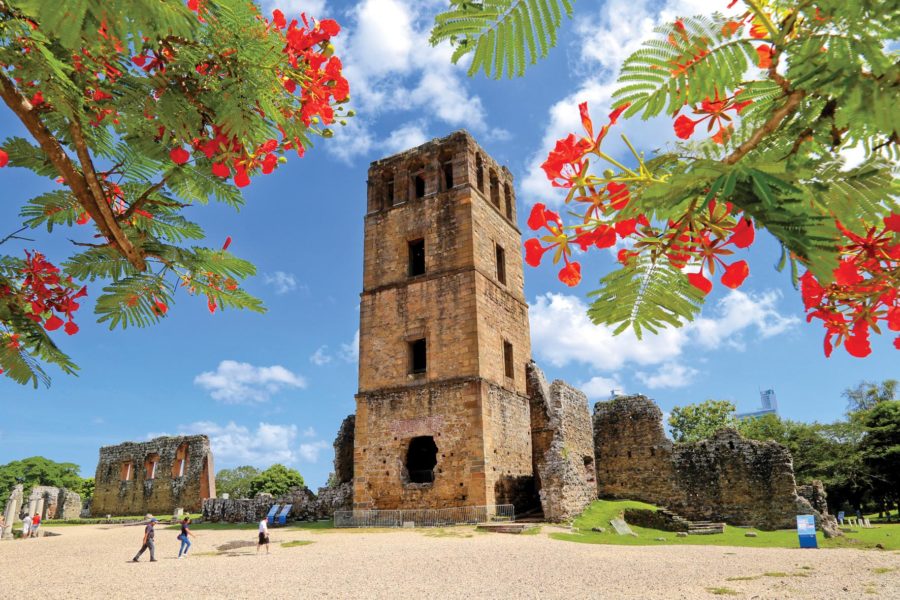
One can visit the ruins on a site that has been recently restaured with the impulsion of a foundation dedicated to the Panama heritage conservation.
The Old Panama (Panama Viejo) has become a Panamanian historical site December 22nd, 1976.
The Colonial Quarter (Casco Antiguo)
2 years after the destruction of the Old Panama City, was inaugurated the “new” city know now as ” Casco Viejo” (the old helmet). As all had been built of wood in the old city, the only solid buiding that has been moved were the churches. The new constructions were still of wood but also of solid.
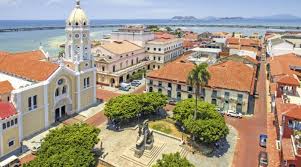
The wooden Spanish balconies with flowers appeared. One of the major meeting point is the France square (Plaza de Francia) with the French Embassy, the French rooster on top of an obelisk and the monument in memory of the inspirator of the Panama Canal: Ferdinand De Lesseps and his ingeneers. The view on the Pacific Ocean, the Bridge of Americas, the Amador causeway and the local atmosphere make of this area a cool place to visit.
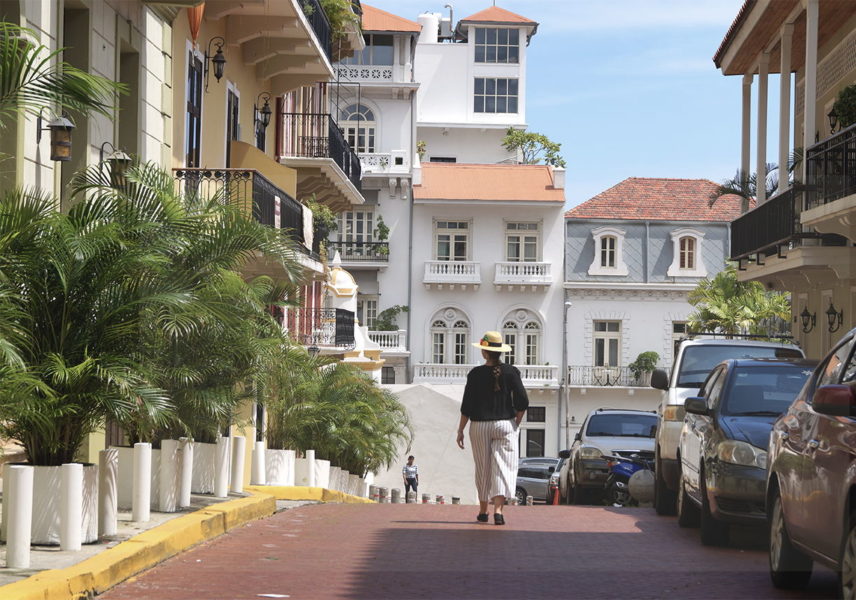
Many museums are located in the Casco Viajo: the Panama Canal museum, the Molas museum, the History museum, etc.. Also the famous cathedral moved from the old city with the Mercedes church … the San Jose church, the Santo Domingo convent with the Arco Chato, the presidency of Panama , etc… the best place in Panama for historical interest. Also many restaurants and roof bars.
Nativa Tours offers special tours exclusively dedicated to museums
Religious Sites
Basílica Menor de Santiago Apóstol
The Basílica Menor de Santiago Apóstol also simply called, Basílica de Natá o Iglesia Parroquial de Natá, is a catholic church built in the city of Nata in the Cocle province. Its construction started in 1522 and did last … 100 years! It is know as the most significative religious building of Panama.
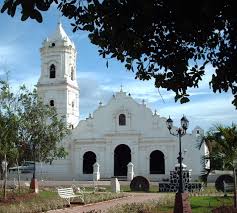
San Felipe church & its Black Christ: Portobelo
The San Felipe church of Portobelo is catholic and shows a cruficied Christ with black skin. In 1928, it has been declared historical monument: the church has not been alterated from the original style.
The Black Christ
This cross is a real devotion for local (afro) people. Every October 15th they organize a big feast to honor it. Some people even walk throughout the isthmus with stations of the cross.
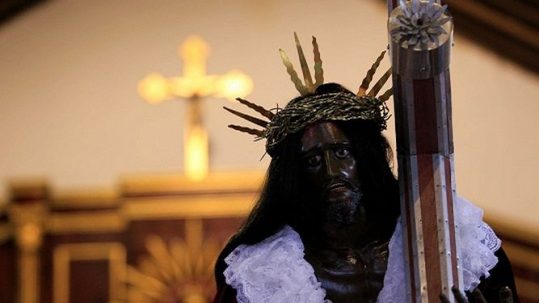
There are several legends about this cross:
The box and the storm: some say that a ship that was heading to Cartagena de Indias, from Portobelo, was taken by a violent storm that broke out, forcing them to return to the port. On the fifth attempt, the boat ws almost sinking, so the crew decided to unload by throwing overboard a huge and heavy box that they carried in their hold. After this the ship was able to navigate without problem. Then some fishermen found the box and when they opened it they saw that it was an image of the Christ, taking it later to the town, they placed it in the church.
The box and the epidemic: another of the legends tells that some fishermen found a box floating in the sea during a cholera epidemic, inside was the Christ and they placed it in the church. Almost immediately the epidemic stopped.
The mistake of images: a third legend assures that the Church of Taboga (an island in the Pacific), ordered the image of a Jesus from a supplier in Spain. On the other hand, the Church of Portobelo asked the same craftsman for an image of Saint Peter. There was a mistake when sending the images, and the San Pedro ended up in the Church of Taboga and the Nazarene in Portobelo. All the efforts that were made to try to correct the mistake were unsuccessful, since something always happened that prevented the Nazarene from leaving the town. The community interpreted that as a divine message and gave up the idea of exchanging the images.
Cathedral Primada Basílica Santa María la Antigua
Another catholic church that did open in 1796 but with construction starting in 1688! It took 108 years to build it. Located in the Casco viejo this is the Episcopalian of the Archdiocese of Panama.
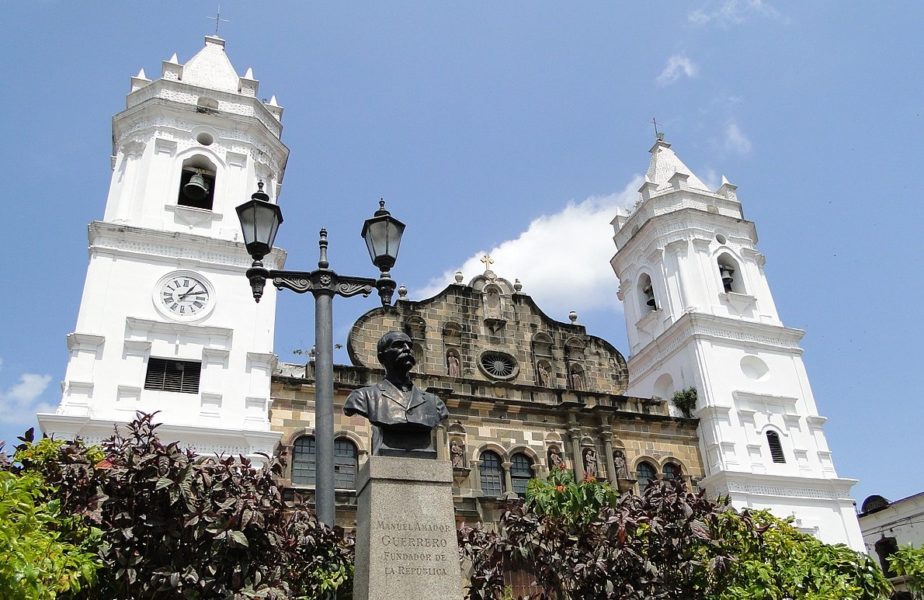
Iglesia de Santa Librada
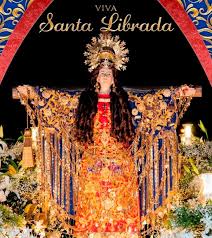
The church of Santa Librada, located in the city of Las Tablas, is another of our historical monuments. The church was completed in 1725
The Panamanian folkloric tradition is rich and abundant in manifestations and the province towns offer religious festivals.
One of the most world famous is that of Santa Librada, the patron saint of the town of Las Tablas.
Thousands of devotees, nationals and foreigners, attend every year, especially on July 19th / 20th, to participate to the feast and parades in honor of ‘La Moñona’ or ‘La Chola’, as they call it.
We are talking of a Mary the virgin crucified: the origin if from southern France Camargue Gypsies (the 7 sisters).
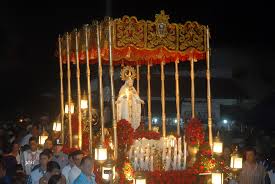
Iglesia Nuestra Señora de la Merced
This catholic church is located in the casco antiguo and is one of the most beautifull of Panama. Its bells are ringing at full peal which is unique (rotating full). The structure is made of wood. It is one of the churches transported from the old city (who burned) to this new site in 1680. There are two chapels inside. One has leading figures of Panama buired under its stone floor. A church to be seen.
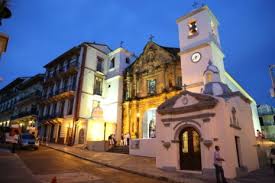
Iglesia del Carmen
Iglesia del Carmen, a Gothic-style church. The construction of the church was conducted in very specific phases, many of which are attributable to the priest in charge of the church from 1856 to 1916. When the necessary canonical authorizations were granted, the priests Jesuits received the church and residence of El Carmen in January 1916. The sanctuary had to be repaired a little over a year later due to two earthquakes that shaked El salvador with 1 month of interval . The painting and artistic restoration was performed by brother Frías S.J. He is the same artist who painted the image of the Lady of Guadalupe in the Gothic altar of the Salesian workshops of the School of Arts and Trades in Santa Tecla. The crucified Christ of the altar and the screen of the main gate as well as the confessional booths and pulpit were carved in these workshops.
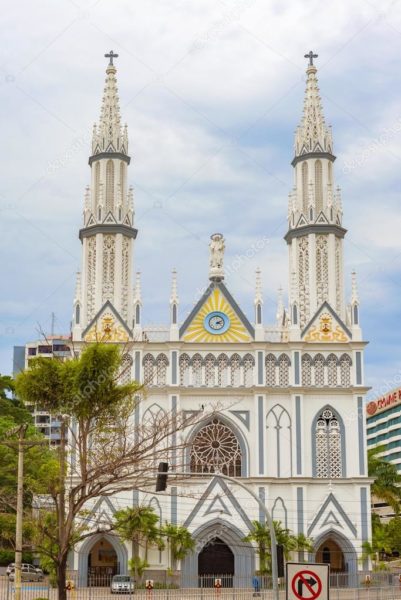
Mont Baru cross
At 3,474 meters (11,398 feet) Volcan Barú is the highest mountain in Panama. This active volcano is one of the few places in the world where one has a chance to see both the Pacific Ocean and Caribbean Sea at the same time. A summit cross is located on top.
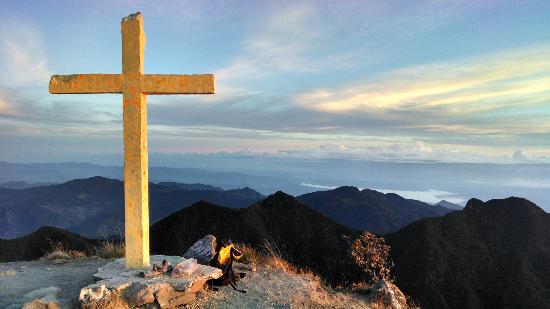
Nativa Tours offers special tours exclusively dedicated to religious monuments.
Some selected programs:
Treasure & Gold Trail (9 days)
Some day tours:
Full Day Panama City & Canal Tour
Half Day Panama City & Canal Tour
